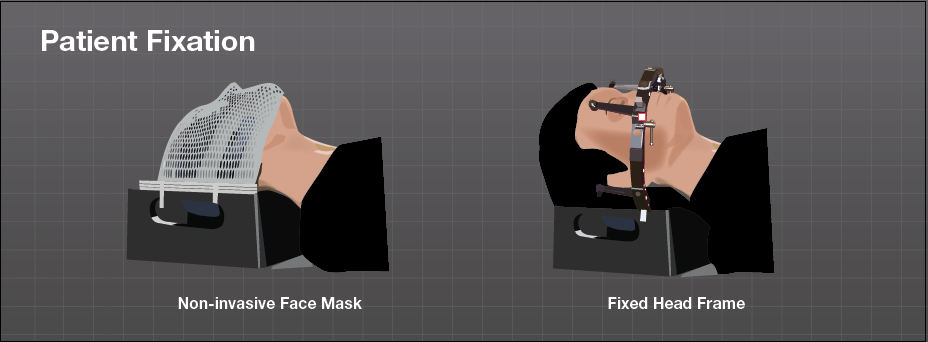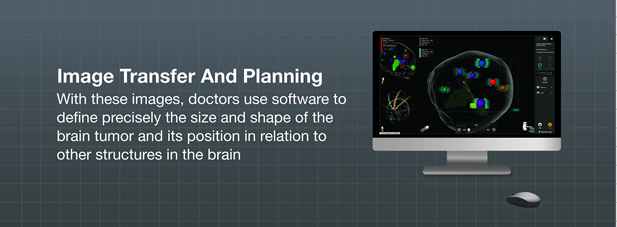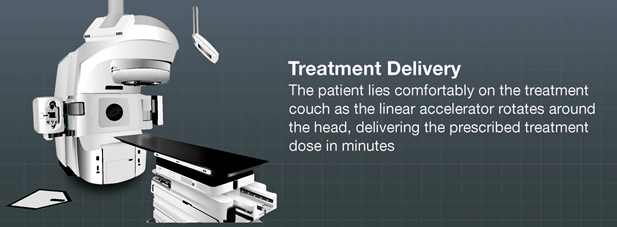The following is a typical example of a frameless stereotactic radiosurgery treatment.
1) Application of Personalized Face Mask
The first step in frameless external beam radiation therapy treatment is the creation of a custom-made face mask. This mask is non-invasive which means it does not need to be fixated, or screwed in, to the patient’s skull prior to treatment. This mask is unique to each patient and the process is completely painless and typically requires no anesthesia. This mask is fixated to the special treatment couch, which is how the patient is kept immobile during the treatment; similar to the way a frame-based treatment is delivered. Benefits to the mask system are that it is non-invasive, so no screws are attached to the skull and greater patient comfort. The patient does not need to wear an invasive frame for an extended period of time prior to the procedure.
2) Diagnostic Imaging

While wearing the custom-made face mask, the patient will be sent to imaging and a series of CT scans will be taken. Using diagnostic scans to plan radiation therapy radiation oncologists can see and target tumors, resulting in better treatment outcomes, more organ preservation and fewer side effects.1
3) Image Transfer and Planning

The diagnostic scans are transferred to the treatment planning software. With these images, doctors use software to define precisely the size and shape of the brain tumor and its position amid other structures within the brain. While a team of cancer care specialists builds a personalized treatment plan, the patient is free to move around the facility. The treatment plan may include a 3D reconstruction of the tumor to help determine the appropriate dose and treatment configuration.
Upon plan completion, a series of strict quality checks are performed to measure the planned accuracy and safety of the radiation treatment to be delivered.
4) Treatment Delivery

The patient is taken to the treatment room and positioned comfortably on the treatment couch. The patient is secured, using the custom mask to prevent any movement during the treatment. If needed, the patient can communicate with the treatment team at any time during the session.
Depending upon the type of system used in external beam radiation therapy, the session may last as few as twenty minutes or as long as 90 minutes. Most patients are able to go home after each treatment session. Some treatment courses can even be completed in just one session.
Once you determine the best course of treatment with your doctor, you can plan out your full day and get back to your normal routine after treatment.
Follow-up, post-treatment is critical to the treatment. Regular clinical and imaging follow-up with your treating physicians and cancer care team are critical to assessing the desired outcomes of the treatment.
Download radiation therapy steps PDF »
Prepare for radiation treatment and recovery »
1 Michael G. Jameson, Shivani Kumar, Shalini K. Vinod, Peter E. Metcalfe, Lois C. Holloway; Correlation of contouring variation with modeled outcome for conformal non-small cell lung cancer radiotherapy, Radiotherapy and Oncology.